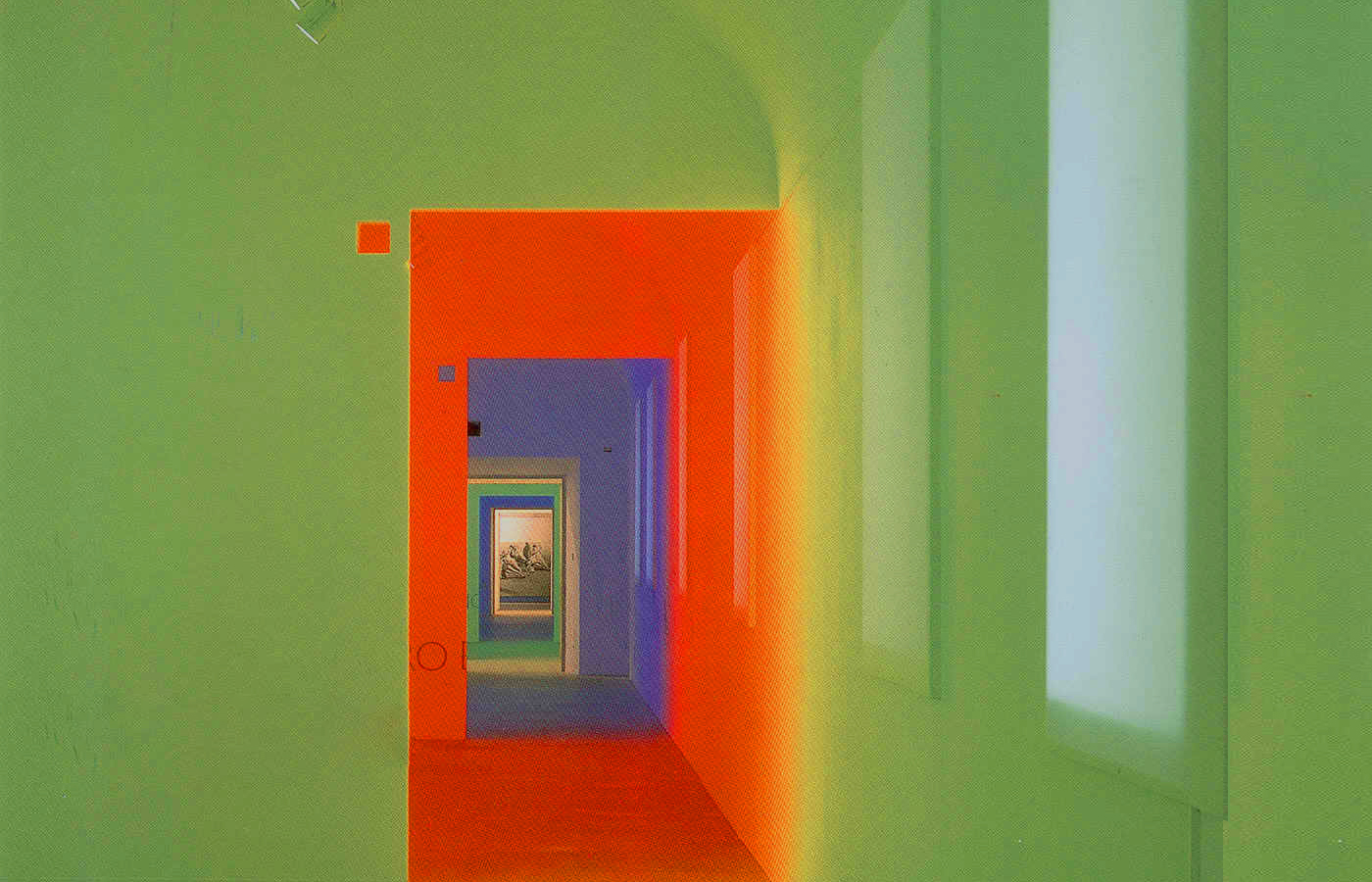
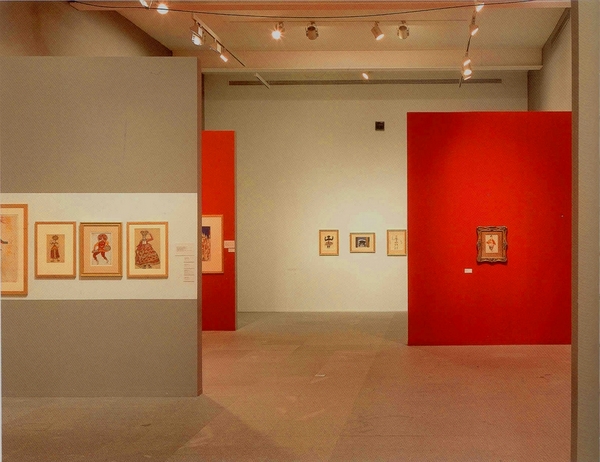
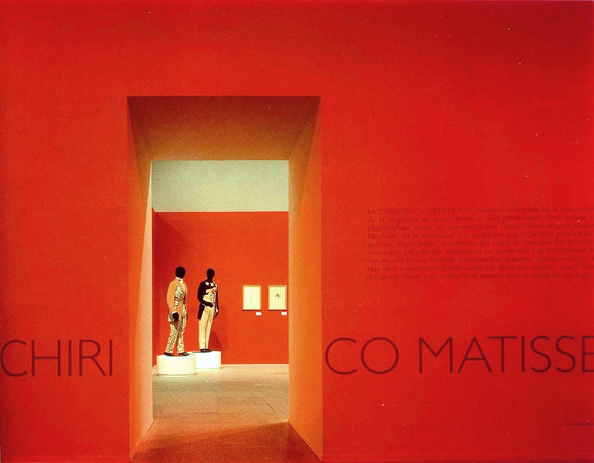
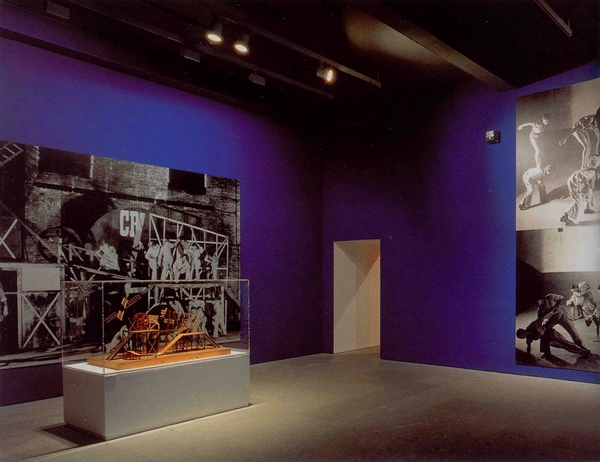
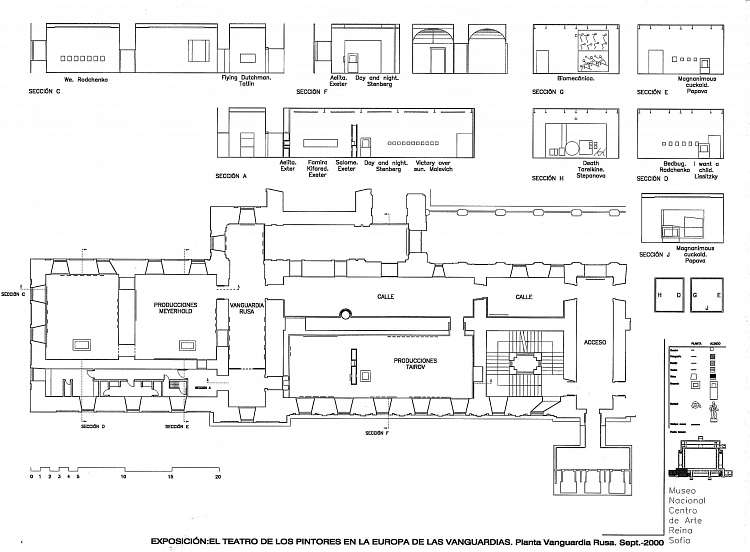
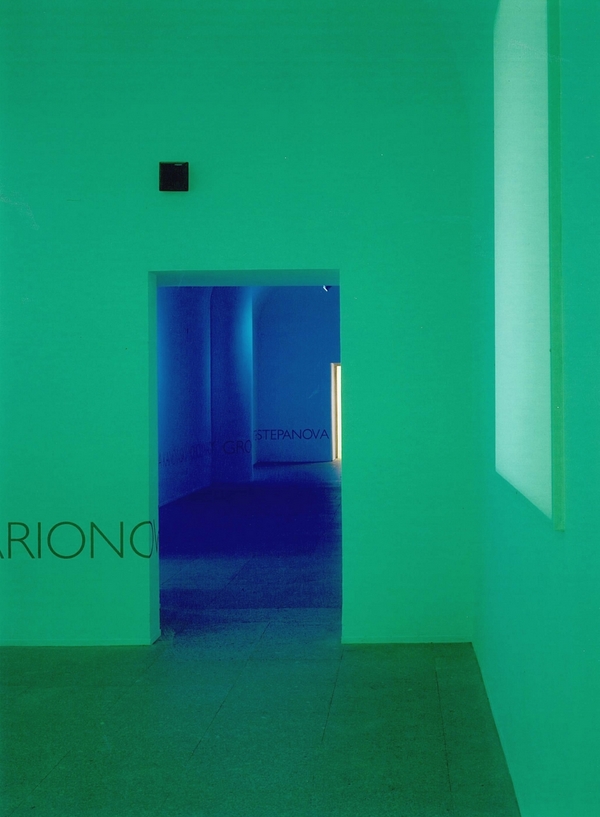
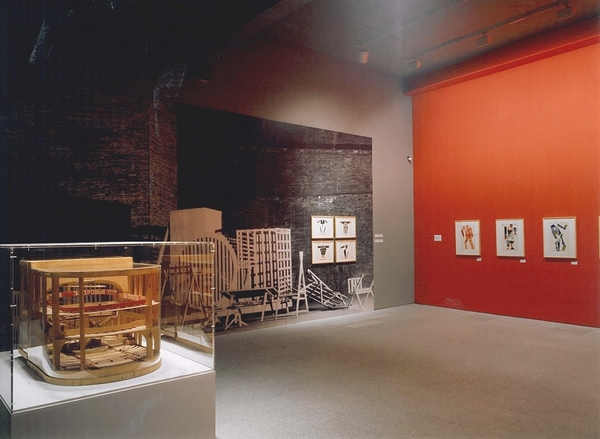
Situation_
Madrid, Spain
Date_
2001
Project and construction management_
Gádor de Carvajal, Juan Casariego y Patricia Reznak
Client_
Museo Nacional Centro de Arte Reina Sofía
-
Work selected for FAD awards
Awarded 1st prize from the Town Planning, Architecture and Public Sector Building Works 2000, del Ayuntamiento de Madrid, section: Temporary Works.
The exhibition takes place on the third floor of the museum’s north wing. The characteristics of the allocated space are defined by two long parallel rooms of different shapes and with two independent public access points. The general criteria for the exhibition is thematic grouping and provides the basis for the design of the show.
One looks to emphasize the distinct characteristics of both rooms by assigning them with two very different roles. The narrower one with a barrel vault, is understood as a through route: it is void of any exhibits and is treated intensely with coloured lighting, creating patchwork chromatic sequences using the endless number of names of the exhibiting artists. The wider and taller room with a flat ceiling, is divided into different areas that can be accessed from the through route. One looks for the differing characteristics of each distinctive production and for the best ways to present them. The Russian avant-garde, the Weimar Republic and the Italian Futurists are positioned at the extreme ends of the room, and the productions of the Ballets Russes y Ballets Suédois at the centre.
So, the Russian avant-garde area is dealt with in a constructivist manner: grey paint on the walls and ceiling, red and blue painted dihedrals, and large photographic reproductions of theatrical productions covering whole walls as a background on which original drawings are placed. The spaces destined for the Ballets Russes y Ballets Suédois, in which they exhibit mannequins, drawings and models, are fragmented by vertical wall hangings like stage scenery, and that, with the use of coloured perimeter walls and accented lighting over the mannequins, creates a stage-like ambience.
The areas allocated for the futurists and the Weimar productions are dealt with more homogeneously, accentuating the walls in the background, where the mannequins by Depero stand out on a podium, illuminated in a theatrical way with spotlights. The models by Mondrian are mounted in display cases with a coloured background.